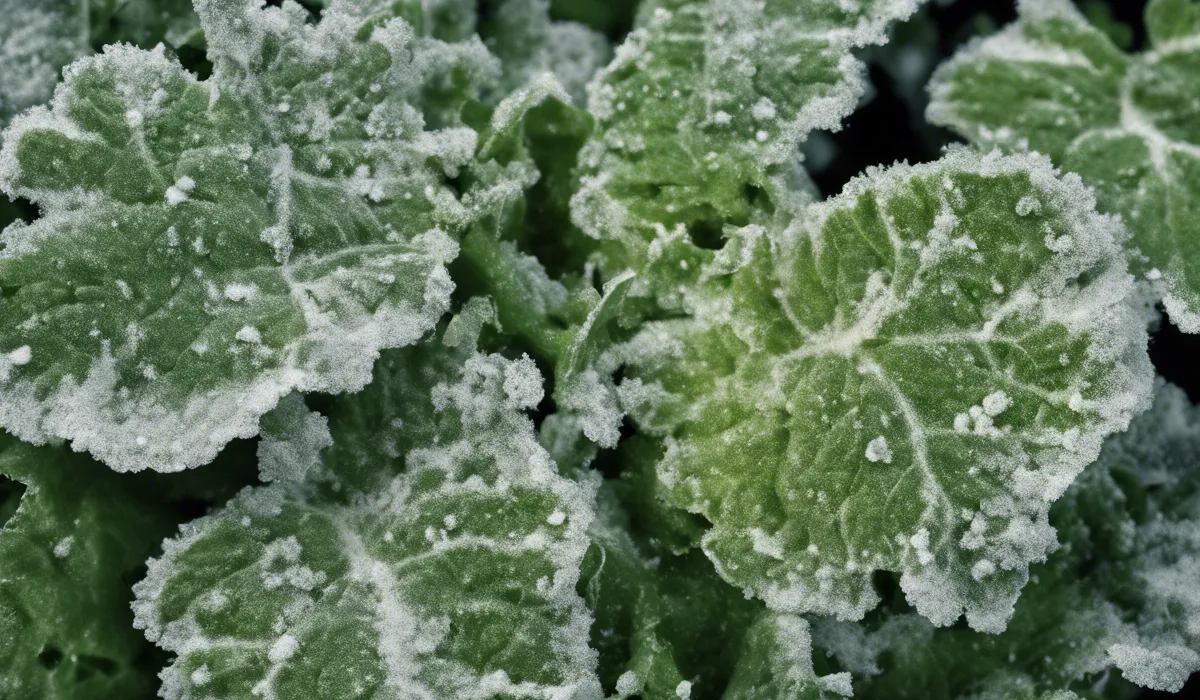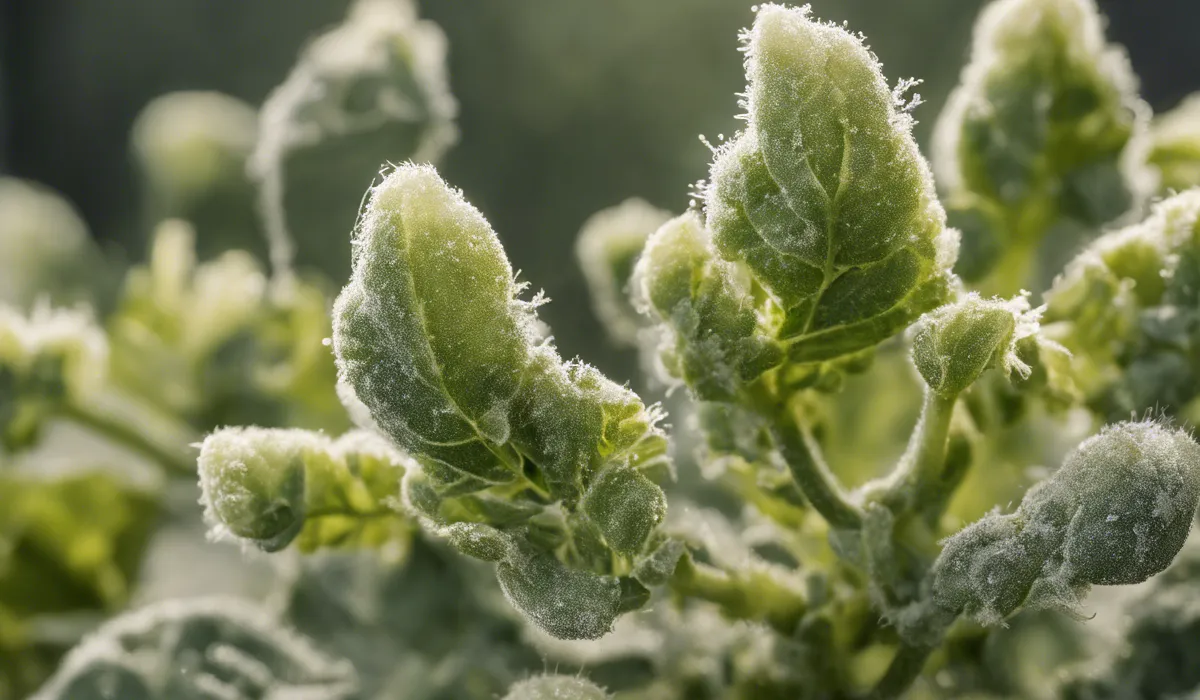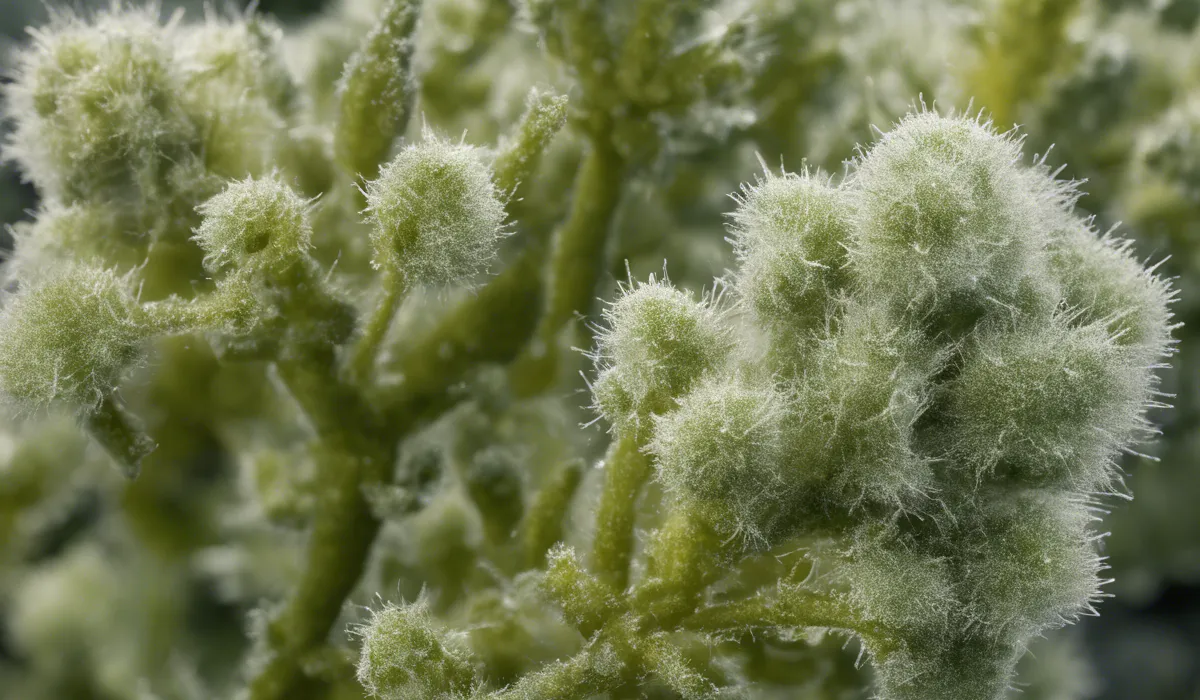Yes, sulfur can effectively kill powdery mildew. It acts as a fungicide, disrupting fungal spores’ metabolism when applied to affected plants. Sulfur is most effective when used preventatively and should be applied according to product instructions to avoid plant damage.
Understanding Powdery Mildew and Its Effects on Plants

Definition of Powdery Mildew
Powdery mildew is a common plant disease caused by various fungal species. These fungi thrive on the surface of plant leaves, stems, and flowers, creating a distinctive white or gray powdery coating.
While it may seem like just a cosmetic issue, powdery mildew can significantly harm a plant’s health and vitality.
Common Plants Affected by Powdery Mildew
Many plants can fall victim to powdery mildew, but some are more susceptible than others.
Household favorites like roses, zinnias, and begonias often battle this affliction, as do vegetables such as cucumbers, pumpkins, and tomatoes.
Even trees and shrubs are not immune, with powdery mildew affecting species like oak and dogwood.
Symptoms of Powdery Mildew Infestation
The first sign of a powdery mildew outbreak is usually the appearance of white, powdery spots on the upper surface of leaves.
Over time, these spots spread and merge, covering large areas. Infected leaves may turn yellow, dry up, and drop prematurely. Severe infections can stunt growth and reduce flowering and fruiting.
Lifecycle and Spread of Powdery Mildew
Powdery mildew fungi overwinter in plant debris and initiate new infections in the spring. Spores are windborne and can quickly infect nearby plants.
High humidity and moderate temperatures foster the spread, while direct sunlight and extreme heat can hinder the growth of the fungus.
Role of Sulfur in Controlling Powdery Mildew

Historical Use of Sulfur in Agriculture
Sulfur has been used for centuries in agriculture to combat various plant diseases. As one of the oldest known pesticides, its use dates back to ancient times when farmers in Rome and Greece would burn sulfur to protect their crops.
Properties of Sulfur That Affect Fungi
Sulfur possesses certain characteristics that make it hostile to fungi.
It disrupts the respiration process within fungal cells and can inhibit the activity of certain enzymes essential for fungal growth. This multifaceted attack makes sulfur a potent fungicide.
How Sulfur Works Against Powdery Mildew?
When applied to plants with powdery mildew, sulfur interferes with the metabolism of the fungal spores and mycelium, effectively killing the fungus.
It is particularly effective when used as a preventive measure, stopping the spores from germinating and spreading.
Application Methods for Sulfur Treatments
Sulfur can be applied in various forms, including wettable powders, dusts, and liquid sprays.
The method chosen often depends on the size of the area being treated and the type of plants affected.
It is essential to apply sulfur treatments evenly and according to the product instructions to ensure effective coverage without damaging the plants.
Considerations and Best Practices for Using Sulfur

Environmental Considerations and Safety Measures
While sulfur is natural and less harmful than many synthetic chemicals, it can still pose risks to the environment and human health if not used responsibly.
It is important to wear protective clothing and avoid inhaling sulfur dust during application.
Users should also be mindful of potential runoff that could affect nearby water sources.
Timing and Frequency of Sulfur Applications
The timing of sulfur application is crucial for its success in controlling powdery mildew. It is most effective when applied early, before high levels of infection occur.
Repeated applications may be necessary, and the frequency should be based on the severity of the infection and weather conditions that may influence the fungus’s growth.
Compatibility with Other Plant Treatments
When using sulfur, it is important to consider its compatibility with other treatments. Sulfur can react with certain chemicals, potentially causing phytotoxicity or reducing the efficacy of other treatments.
Always check the labels of any plant protection products for compatibility with sulfur before mixing.
Potential Impact on Beneficial Insects and Soil Health
Although sulfur is a natural substance, it can have adverse effects on beneficial insects such as bees if not applied correctly.
It is best to apply sulfur in the evening or early morning when bees are less active. Additionally, excessive use of sulfur may alter the pH of the soil, potentially affecting soil health and nutrient availability.
FAQs About Sulfur and Powdery Mildew
Does sulfur effectively kill powdery mildew on plants?
Yes, sulfur is an effective fungicide that can kill powdery mildew by disrupting the metabolism of fungal spores when applied to plants.
How should sulfur be applied to plants for treating powdery mildew?
Sulfur should be applied according to the specific product instructions to ensure effectiveness and avoid potential damage to the plants.
Is sulfur more effective as a preventative measure or as a treatment for existing powdery mildew?
Sulfur is most effective when used as a preventative measure to protect plants from powdery mildew.
Can I use sulfur on all types of plants to prevent powdery mildew?
While sulfur is generally safe for many plants, it is not suitable for all. It’s important to check the compatibility of sulfur with specific types of plants before application.
What should I be cautious of when using sulfur to treat powdery mildew?
When using sulfur, be cautious of the potential for plant damage if applied excessively or in high temperatures, and always follow the product’s instructions.
Final Thoughts
Sulfur is an effective fungicide against powdery mildew, targeting the metabolism of fungal spores.
To maximize its efficacy, it should be used as a preventative measure. Careful adherence to product instructions is crucial, as improper application can harm plants. Sulfur’s strategic use can help maintain plant health and mitigate mildew issues.
